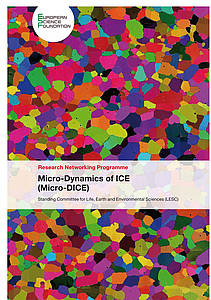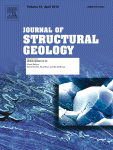NEWS
Special “MicroDice” issue was published in Journal of Structural Geology, Volume 61 (2014), resulting from the MicroDice workshop in Glasgowin 2011 organized by Daniel Koehn
The aim of this programme is to bundle and open resources and expertise across Europe in a interdisciplinary field around the analysis, modelling and interpretation of microstructures in ice, BUT IN LINK with associated fields for ROCKS and METALS.
The program can finance short visit exchanges, workshops, summer-schools, and conferences in any field related to the MicroDIce scientific interests. Calls are permanently open, and procedures are explained on the following website page or external website.
Dr. Maurine Montagnat-Rentier (Laboratoire de Glaciologie et Géophysique de l'Environnement (LGGE), CNRS, Saint-Martin D'heres, France) as been nominated as new Chair, and Dr. Martin Schneebeli (WSL Institute for Snow and Avalanche Research SLF, Institut fur Schnee- und Lawinenforschung, Davos-Dorf, Switzerland) as co-chair.
Professor Peter Sammonds (CPOM / Rock & Ice Physics Laboratory, London, United Kingdom) remains co-chair.
Dr. Bondre-Beil decided indeed in October 2013 to resign from his position of Chair for MICRO-DICE.
SUMMARY
Understanding the dynamic behaviour of ice in glaciers, polar ice caps and sea ice is a major challenge, especially in a time of changing climate. The grain and sub-grain scale microstructure are crucial state variables that link atomic-scale processes to the macroscopic behaviour of ice, including its rheology and transport properties. Improved analysis, modelling and interpretation of ice microstructures are therefore imperative for a better understanding of the flow and evolution of large ice bodies, from polar ice caps, mountain glaciers, sea ice to planetary ice. In addition, linking microstructures to geophysical signals such as radar imaging and seismic profiling will enable mapping of microstructures in 3 and 4 dimensions. This interdisciplinary Research Network will bring together the main European researchers in the field, as well as those in related fields, such as metallurgy and geology. A series of networking activities is planned with the aim of integrating the research efforts of individual groups within Europe and improving the exchange of new ideas and methods.
Improved training and mobility of young researchers will be achieved through a series of workshops, short courses and a summer school, publication of a textbook on ice microstructures, as well as travel grants to visit other research groups and analytical facilities. A research conference at the start of the Programme aims to highlight the major questions and challenges that the research community faces, while a second conference at the end of the funding period will serve to present the achievements of the Programme activities. Web-based initiatives include the Atlas of Ice Microstructures (AIM), which will allow public access to very-high resolution images of ice microstructures from deep ice cores and laboratory experiments. The Micro-DICE website will be a major resource for research and teaching with a lifetime well beyond that of the Programme. The website for MicroDICE is www.microdice.eu .
DURATION
Five years, from May 2010 to April 2015.
PROGRAMME WEBSITE

Micro-DICE has its own website.



